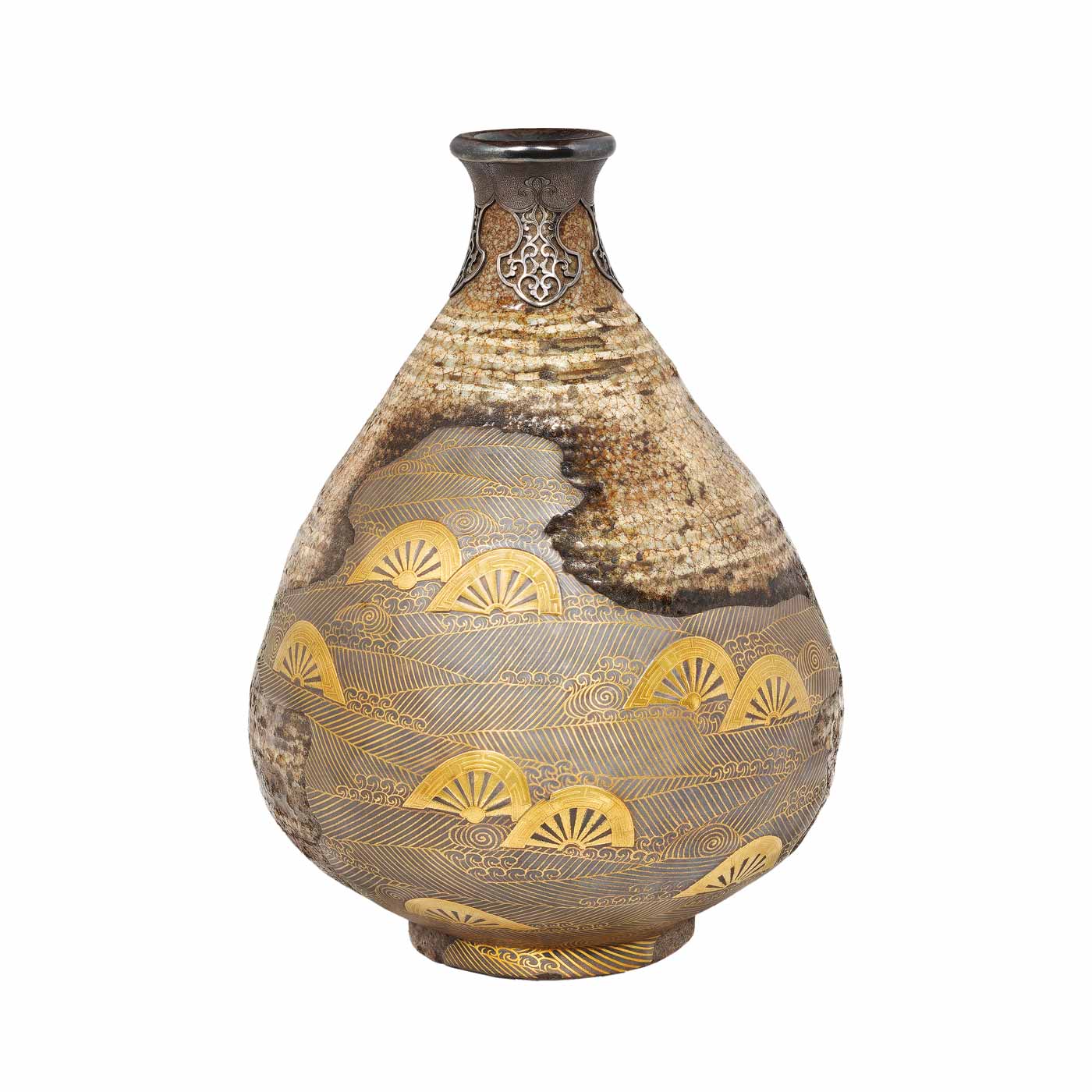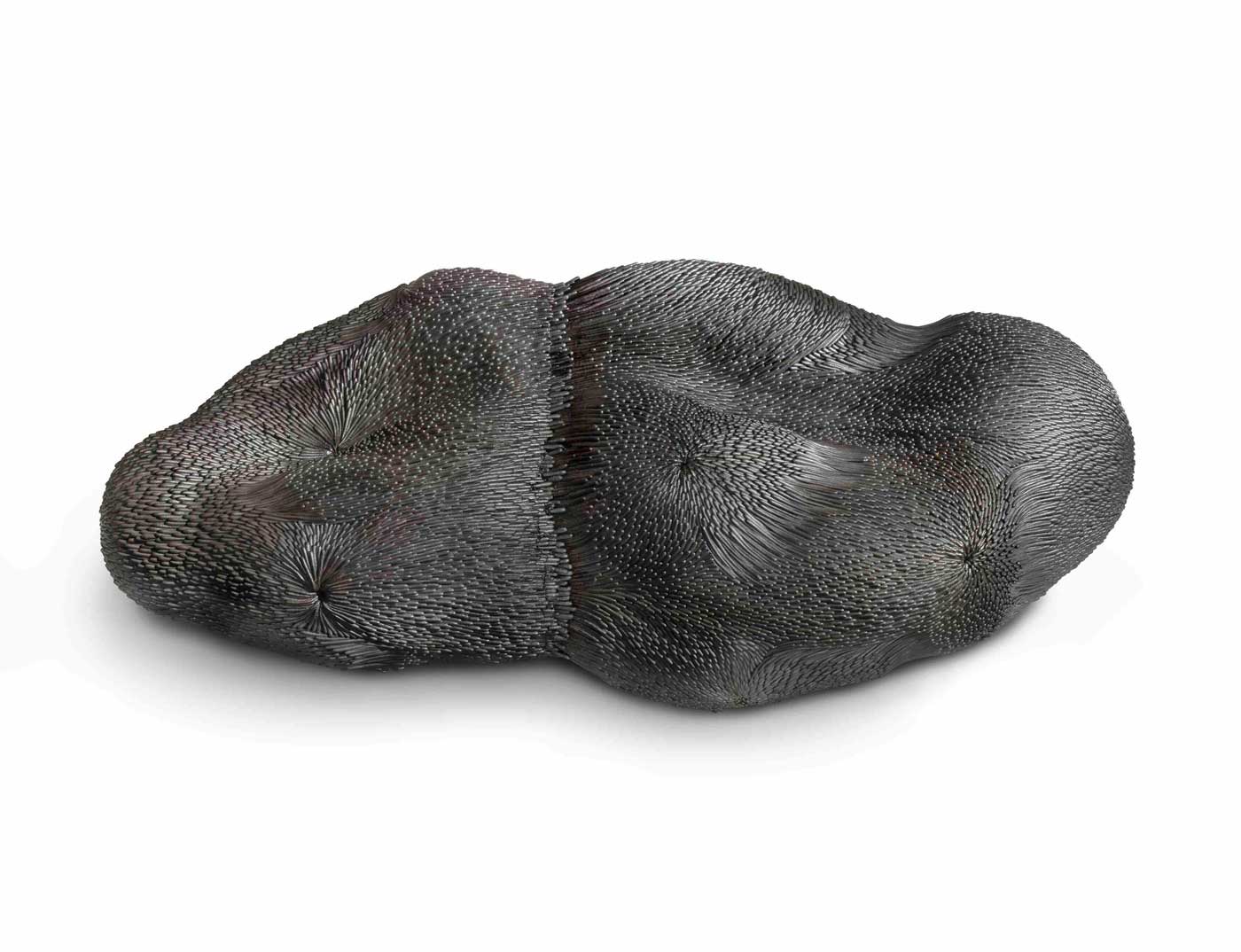Tokkuri
Ceramic
- Sold
-
Size
17.4 (h) x 12.5 x 12.5cm
-
Period
ca. 14th-15th century for ceramics Edo period (1603-1868) for the kintsugi
-
Exhibited
National Asian Art Guimet Museum (Paris) - Exhibition "Japanese Simplicity"
Description
Kōrai katawa-guruma tokkuri
Korean Buncheong Stoneware Pear Shape Flask with Japanese Double Restoration
Joseon period (1392–1897), ca. 14th-15th century for ceramics
Edo period (1603-1868) for the kintsugi
Meiji period (1868-1912) for the chased silver collar
Awasebako (very old collector's box)
This exceptional testimony to the art of restoration presents a double repair: a gold lacquer kintsugi with maki-e decorations of wheels in the waves dating from the Edo period (1603-1868), and a raised silver collar chiseled, probably during the Meiji period (1868-1912).
The "katawa-guruma" motif represents wheels partly submerged in the waves. It is inspired by a tradition from the Heian period (794-1185) where aristocrats traveled in carts pulled by oxen. It consisted in plunging the wheels of the plows into the rivers after a long exposure to the sun to prevent the wood from drying out and bursting. We find this decoration on other objects made at this time, both on the reverse of mirrors, on lacquers, as well as in the illustrations of the scrolls on which the sutras were copied.

